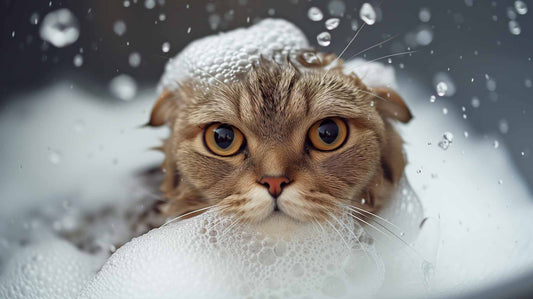
The Best Methods to Prevent Diabetes in Cats
Marie DuchessDiabetes is a serious health condition that affects not only humans but also our beloved feline friends. Just like in humans, diabetes in cats can lead to a range of complications and health issues. However, the good news is that there are several effective methods to prevent diabetes in cats. By following these methods, you can help ensure that your furry companion leads a healthy and happy life.
1. Maintain a Healthy Weight
Obesity is a major risk factor for diabetes in cats. It is important to ensure that your cat maintains a healthy weight. Consult with your veterinarian to determine the ideal weight for your cat's breed and age. Provide a balanced diet and engage your cat in regular exercise to help them maintain a healthy weight.
2. Feed a Balanced Diet
A well-balanced diet plays a crucial role in preventing diabetes in cats. Ensure that your cat's diet includes high-quality protein, moderate fat, and low carbohydrates. Avoid feeding your cat excessive amounts of treats or table scraps, as these can contribute to weight gain and increase the risk of diabetes.
3. Regular Veterinary Check-ups
Regular veterinary check-ups are essential for monitoring your cat's overall health and detecting any early signs of diabetes. Your veterinarian can perform blood tests to check your cat's blood glucose levels and identify any potential issues. Early detection can significantly increase the chances of successful treatment and prevention of diabetes.
4. Provide Mental Stimulation
Stress and boredom can contribute to the development of diabetes in cats. Provide your cat with plenty of mental stimulation through interactive toys, scratching posts, and playtime. This helps to keep their mind active and reduces the risk of stress-related health issues.
5. Minimize Exposure to Toxins
Certain toxins can increase the risk of diabetes in cats. Keep your cat away from household chemicals, pesticides, and other toxic substances. Additionally, avoid exposing your cat to secondhand smoke, as it can have detrimental effects on their health, including an increased risk of diabetes.
6. Spay or Neuter Your Cat
Spaying or neutering your cat not only helps control the cat population but also offers health benefits. Female cats that are not spayed have a higher risk of developing diabetes. Neutering male cats can also reduce the risk of certain hormonal imbalances that can lead to diabetes.
7. Monitor Water Intake
Increased water intake can be an early sign of diabetes in cats. Monitor your cat's water consumption and consult with your veterinarian if you notice any significant changes. Early detection and intervention can help manage or prevent diabetes in cats.
By following these methods, you can significantly reduce the risk of diabetes in your feline companion. Remember, prevention is always better than cure when it comes to your cat's health. Consult with your veterinarian for personalized advice and guidance on how to best prevent diabetes in your cat.













